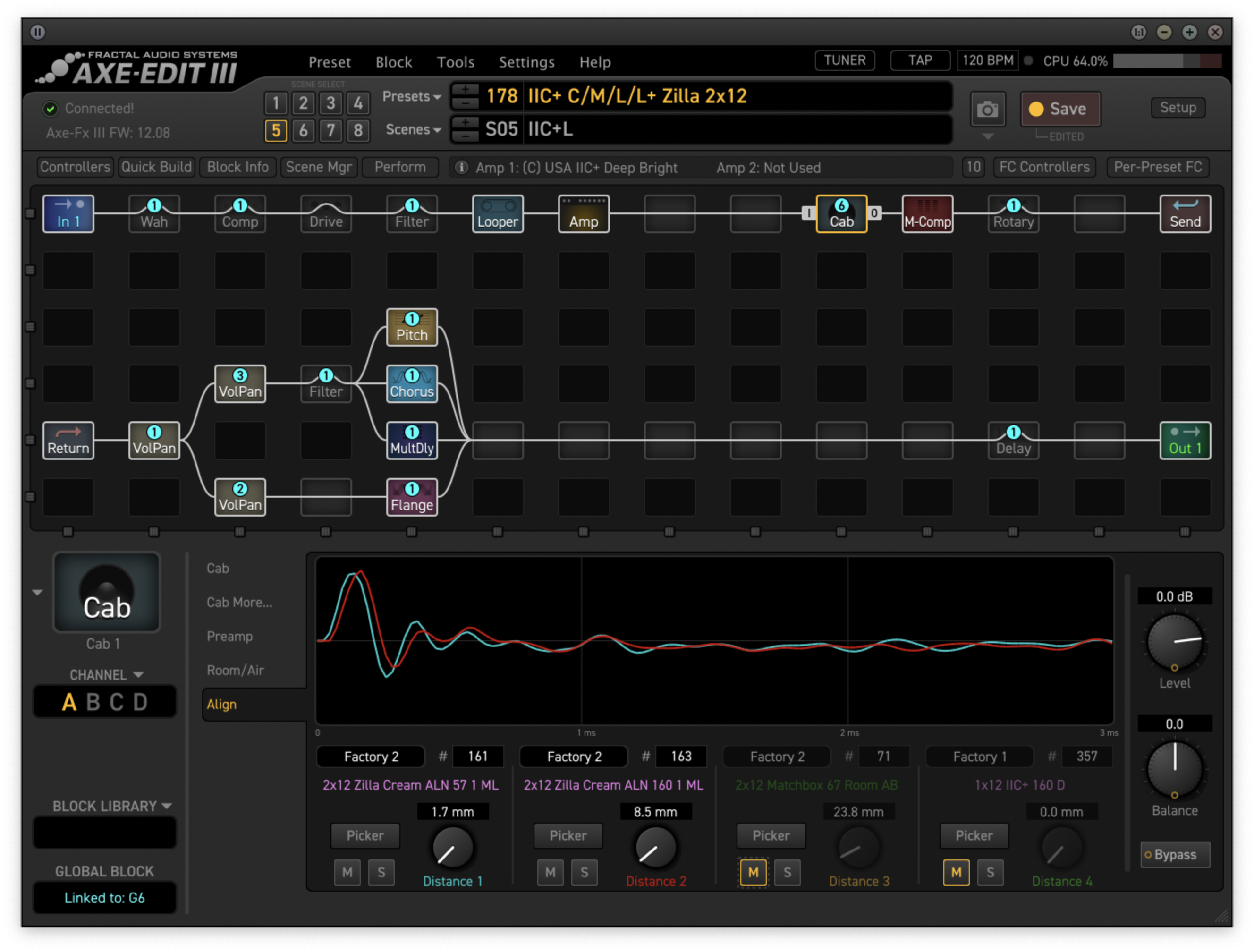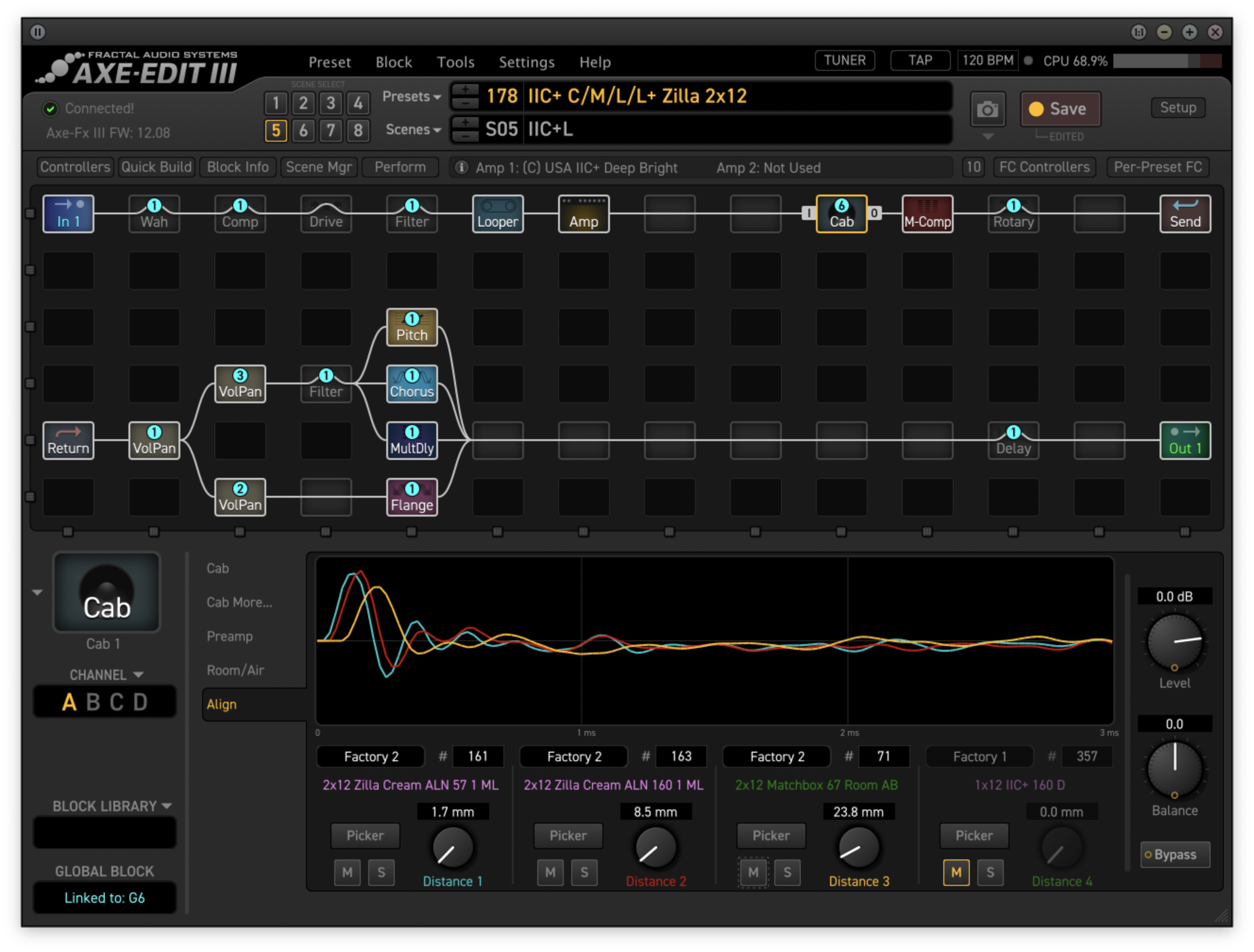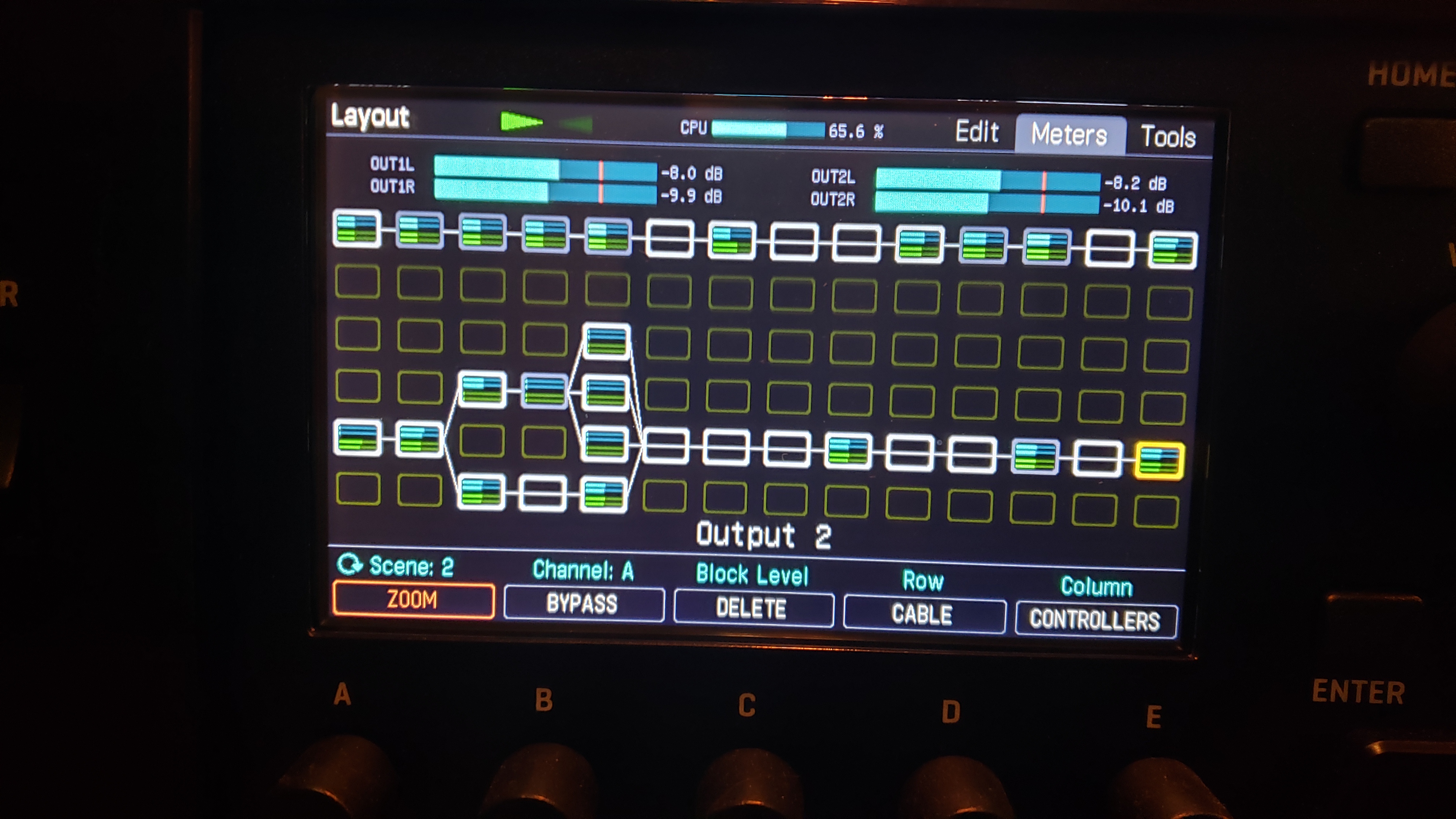Chris Hurley
Power User
I've typically been a poweramp and guitar cabinet user with my Fractal gear. I like a mix of mic'd cab sound along with my actual cab at a live show but have never particularly enjoyed the sound of direct guitar alone. I liked the Atomic CLR well enough and the Alto TS112 and TS110 were fairly agreeable, especially when mixed with a real guitar cab in the room but I still didn't love them on their own- at least for guitar. I play rock guitar. 70's, 80's, 90's, 00's. Friedman BE100 is my go-to model though I like other models and I like to tweak the guts of the amps like i did when I built amps.
I got in the mood to try a smaller monitor with the Axe-FX just out of necessity because I wanted to get it into a smaller but more convenient location for regular playing. I was keeping an eye out for another TS110 or TS210 but became aware of two small and interesting cabinets- the SpaceStation V.3 and the Laney irt-x.
The irt-x has a variety of tricks that should make it a great swiss-army knife to have on hand. It has a built-in cabinet simulator, a DI, an effects loop, an EQ and can act as a poweramp for an external speaker. The idea with this thing is that it can expand a tube amp for more sound or an easier post-amp effects solution. It can also be a FR cabinet for modellers. I found the irt-x to sound small and boxy. It wasn't strident or offensive but it sounded small to me and I didn't love playing through it. I thought hard about keeping it in case I ever had another small tube amp but decided to return it.
Next up is the SpaceStation v.3 which is an odd speaker to say the least because it has four different drivers in it divided into two groups- front and side. It called "Center Point Stereo" and is billed as stereo sound from a single cabinet. I think it is better to think of it as "3d sound" from a single speaker because its not "left vs. right" like you normally expect. The "3d" effect does work and is very enjoyable, with some caveats.
The system is fed a stereo signal which is processed before output. The front speaker group consists of an 8" driver with a coaxial mid driver and a separate tweeter. There is an overall volume control as well as volume controls for the mid driver and the tweeter. If you're feeding it straight mono sound, the front speaker group is all you will hear. It lacks a little in the low end compared to larger cabinets but I still enjoyed playing through it.
To access its trick 3D feature, you've got to feed it some sound that is not panned center. Stereo reverb, delay or chorus will do the trick. Bringing up the "width" control with some stereo content activates the side speaker and brings the cabinet to life. It doesn't sound "stereo" in the same way that headphones sound but it sounds bigger and more spacious than a mono cab. For me, its like the cabinet and the room "opens up." It no longer sounds like a little box in front of me as much- more like its all over the room. I have no idea how that would work if you were in a band situation with hot mics. Presumably, you would get some bleed.
I normally play pretty dry, but this cabinet requires some stereo content so I've been experimenting with that. Adding some reverb and delay certainly works, as does an enhancer block. When I still want it to sound dry, I've been experimenting with panning a separate cab block over to one side which brings in the effect also.
You can add a subwoofer to it if you feel it is necessary. I've used it both with and without a sub for music playback. For music, I certainly enjoy the sub but for guitar its less necessary for me. I don't tune lower than Db though.
So its different but its small and fun to play so I'll be keeping it. YMMV of course.
I got in the mood to try a smaller monitor with the Axe-FX just out of necessity because I wanted to get it into a smaller but more convenient location for regular playing. I was keeping an eye out for another TS110 or TS210 but became aware of two small and interesting cabinets- the SpaceStation V.3 and the Laney irt-x.
The irt-x has a variety of tricks that should make it a great swiss-army knife to have on hand. It has a built-in cabinet simulator, a DI, an effects loop, an EQ and can act as a poweramp for an external speaker. The idea with this thing is that it can expand a tube amp for more sound or an easier post-amp effects solution. It can also be a FR cabinet for modellers. I found the irt-x to sound small and boxy. It wasn't strident or offensive but it sounded small to me and I didn't love playing through it. I thought hard about keeping it in case I ever had another small tube amp but decided to return it.
Next up is the SpaceStation v.3 which is an odd speaker to say the least because it has four different drivers in it divided into two groups- front and side. It called "Center Point Stereo" and is billed as stereo sound from a single cabinet. I think it is better to think of it as "3d sound" from a single speaker because its not "left vs. right" like you normally expect. The "3d" effect does work and is very enjoyable, with some caveats.
The system is fed a stereo signal which is processed before output. The front speaker group consists of an 8" driver with a coaxial mid driver and a separate tweeter. There is an overall volume control as well as volume controls for the mid driver and the tweeter. If you're feeding it straight mono sound, the front speaker group is all you will hear. It lacks a little in the low end compared to larger cabinets but I still enjoyed playing through it.
To access its trick 3D feature, you've got to feed it some sound that is not panned center. Stereo reverb, delay or chorus will do the trick. Bringing up the "width" control with some stereo content activates the side speaker and brings the cabinet to life. It doesn't sound "stereo" in the same way that headphones sound but it sounds bigger and more spacious than a mono cab. For me, its like the cabinet and the room "opens up." It no longer sounds like a little box in front of me as much- more like its all over the room. I have no idea how that would work if you were in a band situation with hot mics. Presumably, you would get some bleed.
I normally play pretty dry, but this cabinet requires some stereo content so I've been experimenting with that. Adding some reverb and delay certainly works, as does an enhancer block. When I still want it to sound dry, I've been experimenting with panning a separate cab block over to one side which brings in the effect also.
You can add a subwoofer to it if you feel it is necessary. I've used it both with and without a sub for music playback. For music, I certainly enjoy the sub but for guitar its less necessary for me. I don't tune lower than Db though.
So its different but its small and fun to play so I'll be keeping it. YMMV of course.






